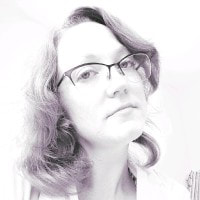|
What Contractor Isn't Familiar With This Frustrating Story... A contractor takes a call for service from a new client. After a brief conversation, they set up a time to inspect the customer's home. The contractor drives to the worksite (30 minutes*). While onsite the contractor spends 30-60 minutes* discussing the project with the customer, performing a detailed inspection of the conditions, taking measurements, documenting scope items, and listening to what the customer wants to have completed. The contractor drives back to their shop (30 minutes*). The contractor spends at least 30-60 minutes* researching products, creating an estimate with sufficient scope and cost details to reflect the vision of the customer and sends that to them for review. After a day or two the contractor follows up with the customer, there is a delay in response, and finally, the customer notifies them that while they appreciate all of the details the contractor provided they were able to hire someone who could do the work for significantly cheaper. Is this just a "cost of doing business" or is there a BETTER WAY? Episode 91 of The DYOJO Podcast will be part 2 of a discussion that we started in Episode 90 on whether contractors should charge for their estimates. For Episode 91 we will continue to review various approaches by construction professionals including providing FREE estimates, getting contracts signed prior to dispatch, using a Letter of Intent (LOI), or other means. At the end of the day, the contractor does well to develop and consistently follow a thorough screening process for all new clients so that they know what they are committing themselves to. If the contractor does not value their own time, NO ONE ELSE WILL. In this video promo for Episode 91 of The DYOJO Podcast:
Thursdays are forThe DYOJO Podcast - helping contractors shorten their DANG learning curve for personal and professional development. KEYWORDS: estimate, pricing, waste, contractor, article, clients, government affairs committee, restoration, industry association, feedback,
0 Comments
Do you see wasting time as a challenge in your business? In our construction company in Puyallup, Washington, this has been a consistent topic of discussion and an area that we are working to lessen this drag on productivity.
Should Contractors Charges for Estimates?In response to questions from contractors on whether or not we should be charging for estimates, we started a discussion on Episode 89 of The DYOJO Podcast. I made a promise that we would dive a little bit deeper into the hybrid concept which we call the Letter of Intent (LOI). As entrepreneurs we want to grow our companies. As business owners we want to lay a foundation for long term success. As contractors there is this battle against a perceived industry norm (or standard) that estimates must be free. We hope you will recognize what many skilled tradesmen who have become business owners are practicing, that you DO NOT have to uphold the MYTH that free estimates are just the of "the cost of doing business". You DO NOT have to uphold the MYTH that free estimates are just the of 'the cost of doing business' The Cost of Doing BusinessThere is a battle between bidding work, producing work, getting paid for work completed, and all the things in between that affect our ability to do more. Your time and expenses for inspecting and estimating a project are real. If you do not recoup those costs in some form, you are feeding the MYTH that estimates are FREE. As a small business owner you wear multiple hats. You only have so many productive hours in a given day. Consider this entrepreneurial dichotomy:
I shared many of my thoughts on how we identified wasting time as an issue in our construction business on the Restoration Rundown podcast from Ironclad Restoration Marketing. The Letter of Intent (LOI) is something we have discussed internally for some time and decided to launch at the beginning of this year. To my surprise, during my first call introducing this process to a customer they responded, "That makes sense, send it over and we will sign it." The host, Ben Ricciardi has also authored an excellent book, The No Bulls**t Guide To Internet Marketing For Restoration Contractors. That title tells you exactly what's in the book. The Contractor's Letter of IntentThere's a lot of back and forth on socials whether contractors should be charging for estimates. Before we can argue this point, we need to define a few terms.
If you provide something verbal, an educated guess of an estimate, based upon rough details provided by the client, then a FREE (non-binding) estimate may be appropriate. "Based on what you have described to me, your rough cost would be in the range of $______ and $______. If it sounds like we understand your scope and the numbers are in your budget range, would you like to discuss the next steps for having an estimator perform a more detailed inspection followed by a written proposal? There is no such thing as a free lunch, someone is paying. STOP perpetuating the MYTH of the free estimate. In the free estimate scenario, you are paying all of the costs to bid the work. AT A MINIMUM, please screen your clients so that you know what you are getting into. We discussed the Client Intake Process on Episode 86 of The DYOJO Podcast. If you have a clear, thorough, and consistent process for client intake, you will generate credibility with the client and set your team up for success. You will know whether the juice (Free Estimate) is worth the squeeze (Your actual costs of inspecting, writing, and producing a free estimate). Every company has some form of leadership, and whether it is good or bad will be judged by the results it produces. A company with good leadership will thrive not only as a business but as a group of people. The amount of positive outcomes that are provoked by good leadership are exponential. For the restoration contractor, good leadership is critical due to the spontaneity as well as both physical and mental challenges that come from restoration work. The discussion from Episode 84 of The DYOJO Podcast - Developing Your Leadership Skills, draws out helpful principles for the formation of functional leadership, such as the importance of having the right idea about what leadership entails. Leadership is not just rigid rules or pointless processes. The guests on this episode will help the leader build their own way to lead, unique to themselves and their company. Ownership Creates LeadershipDenis Beaulieu an environmental branch manager in Thousand Oaks, CA and former guest (Episode 15) advises that a good leader will give their people opportunities to take ownership of things and make decisions. People that can think for themselves and problem solve will be able to execute things quickly because they won’t have to wait for authority and will be confident in how they conduct themselves on the job. A client witnessing lack of confidence from a worker will feel that same lack of confidence in the company. He also says that a good leader will hire people smarter than they are. This helps the leader to grow themselves from constantly learning from those they are around. And of course the company benefits from their knowledge, too. Self Discipline Creates LeadershipMike Kenny and David Smith joined the DYOJO Podcast for Episode 12 to discuss leadership formation perspectives. Mike, a skilled trades service manager, shared that a quote from former Navy Seal Jocko Wilnick that has helped him create his leadership mindset is, “Discipline equals freedom.” Details build the way to goals. Being disciplined will establish a foundation of habits. These habits over time are how goals are achieved. David, a former estimator skilled in the nuances of program work, adds that structure leads to discipline. If the structure is lost, so is the discipline. A good leader makes sure to hit upon the basics everyday. Even when things come up that may call for changes, they will fall back to their regular routine. Structure Creates LeadershipLex Sisney (Episode 22) is the author of two books about business growth,
He has this to say about structure, “Structure is a very misunderstood concept.” Structure is different from processes. He gives the example of your skeleton being the structure and the processes as the neural pathways, blood vessels, muscles, etc. If there is something off on the skeleton then the body will maladapt to it. Adaptation Creates LeadershipPodcast host and author, Jon Isaacson, tells of what he learned about being a good leader as well. He warns managers not to hire people with the thought that because they have prior experience they can be just “plugged in” and ready to play. Experience doesn’t mean they know how to do things correctly for your company. As Jon talks about in So, You Want To Be A Project Manager? someone with technical experience won’t have experience with your company culture, you will have to be intentional as a lead to develop that within every employee. Leadership is an active role. Leaders will always be adapting to the specific processes of how they lead their people. There are basic principles that won’t change, but the way those principles are practiced will take on different nuances according to the present circumstances. The company is a living organism and will work to develop ownership, self-discipline, structure and adaptation as they nourish their people to keep growing for the health of the company.
How often do contractors receive arbitrary rebuttals to their inclusion of overhead and profit in their estimates for insurance claims? The answer is often. Sometimes the issue is easily explained by clarifying the complexity of the work or the number of trades involved. In this article we will briefly review a few scenarios, ensure that we have the correct understanding of indirect (overhead) costs verses direct (supervisory) costs, and share a sample email format for requesting clarification from the adjuster on a denial of overhead and profit. Work Complexity and O&PIf complexity is the barometer, O&P should be added to every claim without question (especially program or third party administrator work) as the level of compliance (i.e. complexity) for an insurance claim exceeds "normal" contracting scenarios. The insurance claims process for mitigation or renovation is inherently more complex than home improvement or remodeling when insurance is not involved. If complexity is a condition of the insurance policy, the carrier representative should be able to point this out to the customer and the contractor. A good question for the customer to ask would be, "Please show me where it states in my policy that overhead and profit is a condition of complexity." General Overhead are expenses incurred by a General Contractor, that cannot be attributed to individual projects, and include any and all expenses necessary for the General Contractor to operate their business.” - Xactware Direct vs. Indirect CostsAs we wrote about previously, "Indirect costs are all of those necessary expenses that a contractor incurs but are not directly related to an individual project. If a contractor, or any business, does not account for their overhead expenditures in the costs of their goods and services, they will not be in business for long." Indirect Costs are necessary for a contractor to remain in business. The insurance company may not care about this, but they sure understand their need to be profitable and protect that with great force. In most industries the overhead and profit are embedded in the costs. For example, when you buy an apple at the grocery store, they do not break out what their overhead and profit factors are for that item but they are certainly charging for it.
O&P are not optional for any business that wants to remain in business. General Overhead expenses are not included in Xactware’s unit pricing, but are typically added to the estimate as a percentage of the total bid along with the appropriate profit margin. These two costs together constitute what is normally referred to in the insurance restoration industry as General Contractor’s O&P, or just O&P.” - Xactware Supervisory labor (aka project management time) is as much a real cost that should be accounted for an compensated for the work as temporary power or restroom facilities. Supervisory time is a direct cost and should not be confused with or "traded" for overhead (indirect) costs. It is not included. It is necessary. It is common to either bid supervisory labor as a percentage of the estimated labor or submitted as a breakdown for billing at project intervals (i.e. bi-monthly). A Sample O&P EmailIf you receive a denial or a request for clarification for why you are requesting overhead and profit (O&P) as a contractor, this is a sample email that you could discuss with your customer and then send to the insurance carrier representative with the customer cc'd. Understand, this is not a guarantee that an adjuster will see things your way but it should help your customer and the adjuster to more clearly understand your position. Why wouldn’t overhead and profit apply? Overhead and profit are normal and necessary costs for a general contractor to remain in business.
Xactware, the estimating software utilized for this estimate as is common for insurance claims, states, “General Overhead are expenses incurred by a General Contractor, that cannot be attributed to individual projects, and include any and all expenses necessary for the General Contractor to operate their business.” Overhead and profit is normal and necessary for all companies including insurance companies. The insurance company included overhead and profit in their policy fees to the insured, correct? Where in the policy does it state that overhead and profit are excluded from the cost for an approved scope of work? Most contractors, if not all companies (including insurance), embed their overhead and profit costs into the lump sum pricing. Presenting overhead and profit as a markup is unique to insurance claims estimates in Xactimate. The software company advises, “General Overhead expenses are not included in Xactware’s unit pricing, but are typically added to the estimate as a percentage of the total bid along with the appropriate profit margin. These two costs together constitute what is normally referred to in the insurance restoration industry as General Contractor’s O&P, or just O&P.” Please advise if you need any further information to approve the total submitted scope and cost from our estimate as we know our shared customer is eager to move forward with restoring their home to resemble pre-loss conditions in a timely manner. Contractors often struggle to find the "right" price for their services. There are many means and methods for bidding anything from drywall repair, tile floor replacement, kitchen remodeling, to whole home renovations. Whatever the cost estimation platform is or the estimating software that a contractor chooses to use to try to hone the science of their process, there is always an element of art in determining the materials, labor, and equipment for a project. In this segment from The DYOJO Podcast Episode 82, Steve Patrick of Level the Playing Field shares a story about a mindset change for a plumbing contractor that affected how they priced their services. Estimating and Closing Work at the Right PriceDuring our conversation regarding using questions during business negotiations, especially with insurance claims adjusters, Steve Patrick shared a story that he heard during a sales training. The story goes something like this, There was a plumber in Chicago who immigrated from Yugoslavia. He was a master plumber and he was selling the work for a higher price than anyone else in Chicago. He was closing almost like 90% of the jobs that he went out on. The owner of the company asked him one day, "How is it that you're able to close such a high percentage of the work you estimate? The owner obviously wanted to clone this plumber who could bid work higher than their team members and converting a high percentage of those estimates into contracted work. The owner told the plumber "I want you to train all the rest of our plumbers. I want you to show them how you are able to close 90% of the work you estimate when you are selling it at a higher price than anyone in Chicago." This causes the plumber to pause. He doesn't know why he closes more work than anyone in the organization or how he is able to charge more than them either. The plumbers says, "I don't know. I just go in and explain what needs to be done and the customer hires me to do the work." Steve asks The DYOJO Podcast audience, "So, what happened to the plumber's closing ratio after the owner told him he was charging the highest price in Chicago?" Unfortunately, we know the answer, his close rate plummeted the 40%. The Mindsets and Habits for Estimating SuccessWhy was there such a drastic reduction? As Mr. Patrick says, "Mindset change. The plumber's mindset changed. Back when he thought he was bringing tremendous value to the client, they bought the value that he was selling. Once the owner told him that he was charging the highest price in Chicago, all of a sudden the plumber thought, oh my goodness, I'm overcharging the clients. And guess what happened?" Isn't that interesting? It's all about what is in between our ears. Mindset change. As a former adjuster, Steve trains roofing and restoration contractors how to succeed in the challenging world of insurance claim's repairs. In the extended conversation of Episode 84, Mr. Patrick shares, "It's your mindset. You know that you're right. You know you bring a tremendous value to the client." The contractor should take the confidence of the value they bring to helping the client navigate the insurance claim repairs process. Steve says, "Whenever you are dealing with an adjuster, 80-90% of the words coming out of your mouth should be in the form of a question." Mindset change. What do we all want as contractors? We want to provide a good service and be paid for our work. Where does this process start? As we discuss on Episode 86 of The DYOJO Podcast, positive project outcomes start with a clear and consistent client intake process. Overhead and Profit for the ContractorThe client intake process also initiates the data collection process. The gathering, interpretation, and application of solid data is critical to helping an entrepreneur make good business decisions. If you want to be profitable as an organization you must manage the project lifecycle sequences. We begin this discussion on The DYOJO Podcast Episode 89 as well as a series of articles on overhead and profit that myself, Ben Justesen, Anthony Nelson, and Ed Cross will be releasing for the in-print version of C&R Magazine. Using A Letter of Intent (LOI)Contractor's often discuss whether they should be charging for estimates. Some of the options include:
We talk rather frequently with contractors about this concept of the Letter of Intent or LOI. We will introduce this resource during Episode 89 and will go into further detail in the following episode. The Four Modes of ProfitabilityWhat does the average contractor want? Our competition as contractors isn't even necessarily with the market, but with ourselves. We want to grow our company by laying a foundation. If you want to be a profitable company, it's important to understand some of these concepts that lead towards profitability. So that's why we're tying a lot of this together, from:
I'm working on the first in a series of articles with C&R magazine that's going to touch on some of those elements of overhead and profit. My contribution, the working title is The Four Modes of Profitability for Contractors. There's an infographic coming out from Restoration Industry Association (RIA) that will also be a helpful tool for contractors as they work through the process of developing and growing their team. Within that tool there are definitions and visual aides such as these two:
These resources are designed to help shorten your DANG learning curve and to build your company through those stages of profitability. The Contractor's Fight for SurvivalWe have observed or participated in many companies that don't make it unfortunately, the Bureau of Labor Statistics estimates that 20% of small businesses fail within the first year and 30% after the second. You feel it right? You're in an all out battle for survival. You want to move from survival mode to scraping-by. At the end of your first year you get hit with this tax debt and renewals for indirect (aka overhead) costs such as your licensing, bonding, and insurance. You realize that to even scrape by as a business, you must charge more than you were charging. You're gonna have to think differently about how you're charging for labor, materials, equipment, overhead, and profit. Every year is a fight to compete as a contractor, the average failure rate for businesses: The DYOJO Podcast is designed to help you shorten your DANG learning curve. Going back to those statistics we talked about, which will be in the series of articles with C&R magazine. The mindset used to be that if you can make it past year three, you're probably going to be fine. But the statistics show that if you make it to the fifth year you're in the 50/50 club. 50% of the companies that started at a similar time are likely no longer going to be in business. And then if you push through to year 10, you're in the exclusive 70/30 club. Sadly, only 30% of entrepreneurs make it to the decade mark. Every year is a fight.
That's why we say you're moving from survival to scraping by, to having a fighting chance, and to competing. My latest book, How To Suck Less At Estimating, was written to pick away at some of those faulty foundations that regularly lead to profit sucking estimating habits. In doing this I'll try to break out those mindsets that are particularly helpful for the categories of professionals listed above which are (1) the aspiring professional, (2) the estimator, (3) the new manager, and (4) the business owner. By the end of this book and the course that soon will be coming with Restoration Technical Institute (RTI) you will have at least six elements that every estimator needs in their tool bag for success. |
Words
The DYOJO - helping contractors shorten Archives
June 2024
Categories
All
EstimatingMarketingInsurance ClaimsLeadership |
|
| |||||||










 RSS Feed
RSS Feed
